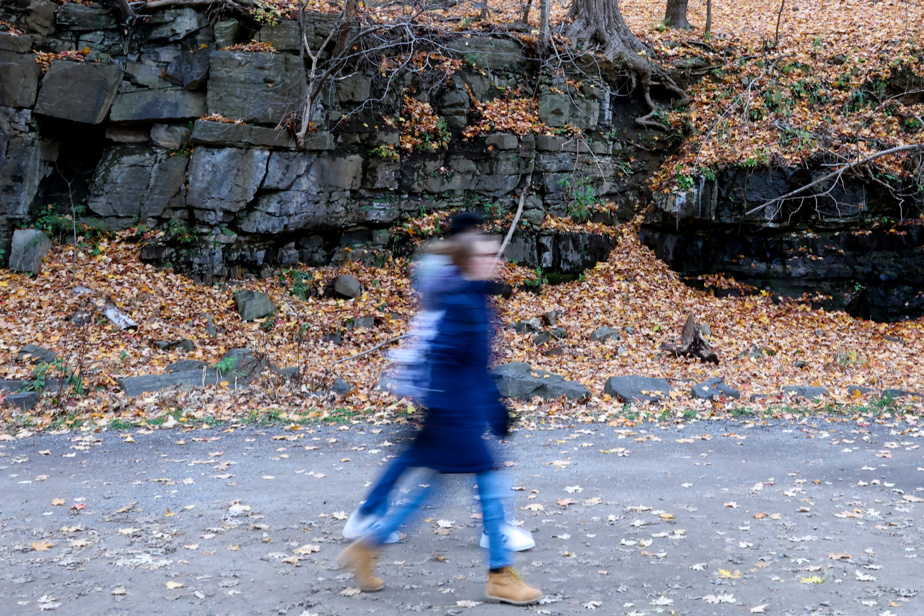For visitors and Montrealers alike, Mount Royal is a must-see. It is a tourist place for some, a site of sporting and family activities for others. And yet, we know little about him. How was this hill which gave its name to the city formed? When did it appear in the landscape?
It’s time to take a little geological tour to answer these questions.
Cœurs des sciences (a scientific culture center at UQAM) and Les Amis de la montagne occasionally organize such visits. It is also possible to plan your own visit by consulting the website of geologist Pierre Bédard: there you will find a large amount of information on the origin of Mount Royal and on the sites not to be missed to better understand what happened. passed more than 100 million years ago.
We meet Pierre Bédard at the foot of the George-Étienne Cartier monument, opposite Jeanne-Mance Park, to undertake a little geological excursion with him. He begins by pulling out maps and diagrams to illustrate the geological history of the Montreal region. The first item on the agenda? Tackle the legend that Mount Royal is an ancient volcano.

PHOTO FRANÇOIS ROY, THE PRESS
Geologist Pierre Bédard makes the rocks of Mount Royal speak.
Yes, there was indeed a rise of magma, but it stopped two kilometers below the surface around 125 million years ago. The pressure caused by the gases and steam caused explosions that opened vents to the surface, but the rock debris immediately blocked these conduits, which are called diatremes.
Erosion has done its work, removing the sedimentary rock and allowing the ancient magma to emerge, crystallized in the form of gabbro and monzonite, much harder rock. This protuberance is Mount Royal.
The process was very slow, says Pierre Bédard. We are talking about an erosion of one millimeter per century.
Armed with this new knowledge, we move towards our first observation site, along the Camillien-Houde route. The blasting and construction of this route have cut the cliffs, which makes it possible to clearly see the rocks present.

PHOTO FRANÇOIS ROY, THE PRESS
We can clearly see the diagonal dike of contrasting color.
Most visitors here only see ordinary rock. But with our guide (or with the diagrams that can be found on his website), we can identify a section of limestone (the typical gray stone of Montreal, a sedimentary rock), then a section of fragmented rocks (the debris that blocked the exhaust chimneys). This last section is crossed by a diagonal dike of contrasting color.
A dike is an intrusion of magma that crosses geological layers.
We (carefully) follow the Camillien-Houde route to observe another very pretty rust-colored dyke. Pierre Bédard points out a white border: it is marble. The heat of the magma thus metamorphosed a small layer of limestone.

PHOTO FRANÇOIS ROY, THE PRESS
Note the white border on each side of the dyke
At the Camillien-Houde belvedere, Pierre Bédard shows us another succession of rock types: gabbro (dark gray), cornean (a metamorphic rock, here rust-colored) and limestone. Normally, the corneal should be above the limestone. If this is not the case here, it is because there is a fault, which takes the appearance of a small area of excavation.
We continue our walk to the summit of Mount Royal. Pierre Bédard soon shows us an outcrop of gabbro. We see small holes there: these are voids left by grains of olivine which have disappeared. But the geologist wants to show us another fun feature of the rock. He takes out a small magnet at the end of a chain which quickly sticks to the surface. This gabbro contains magnetite, which attracts the magnet. It wouldn’t be a very good idea to get lost here and take out your compass: it would be wrong.

PHOTO FRANÇOIS ROY, THE PRESS
There is magnetite in this rock, gabbro.
But we easily find our way to the Kondiaronk lookout. From here, we can see some other Montérégie hills, cousins of Mount Royal. Taking the large staircase to go back down, we walk alongside a small outcropping of cornea. Pierre Bédard explains to us that it is a hard rock that can be broken into sharp, slightly curved fragments. The natives used it to make arrowheads and ax blades.

PHOTO FRANÇOIS ROY, THE PRESS
Rock that could be carved
“There was no flint,” says Mr. Bédard. The corneal was therefore an essential material. »
At the bottom of the stairs, we find another interesting phenomenon: a resurgence. This is groundwater that comes out between the strata.
We could continue the walk for a long time. Pierre Bédard estimates that it would be necessary to hike around thirty kilometers to visit all the sites he has listed.
This is not a problem. By using its website, you can take several short walks, in different sectors of Mount Royal, to discover other geological secrets.
